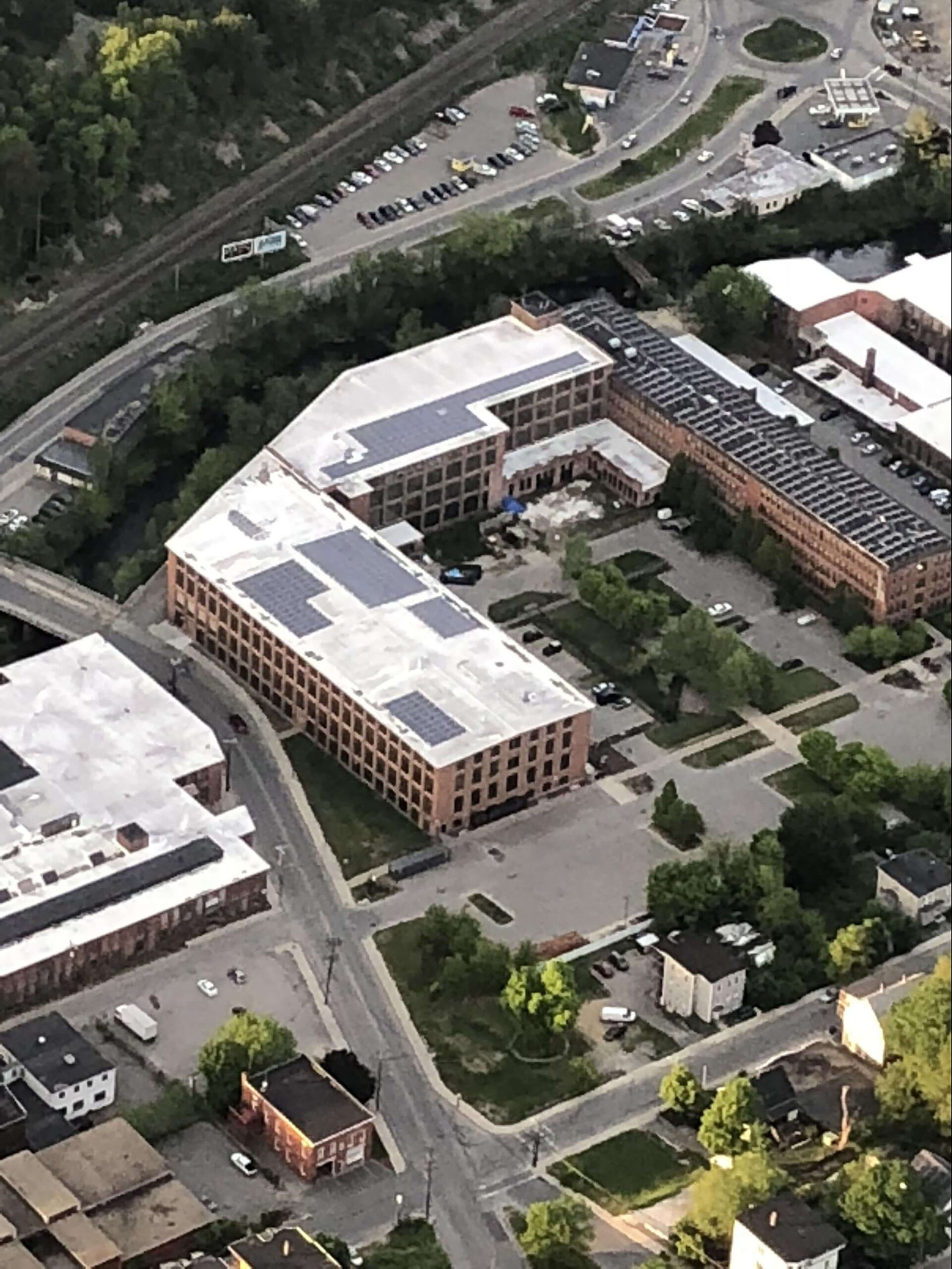Boston area, MA
Indoor Facility
Liquid-cooled LED | Automation | Historic building

This 250,000 square foot indoor cannabis operation in the Boston area includes 150,000 square feet of grow rooms and 50,000 square feet of flowering canopy, featuring two to three tiers of vertical racking in clone and veg rooms inside a retrofitted industrial and educational building built in 1893.
The existing building participated in an energy efficiency incubator “Go Green” program to install a geothermal heat pump system for heating and cooling, meaning energy consumption for the facility is largely from electricity.
The facility uses a fully integrated lighting, HVAC, and controls solution that includes liquid-cooled LED light fixtures to substantially reduce lighting and cooling energy consumption. Handheld and permanently installed light meters are used in the plant canopy to measure actual PPFD and provide feedback to the HVAC and lighting controls systems.
Liquid-cooled lighting systems directly remove most waste heat generated by light fixtures, reducing the amount of cooling required to maintain a target indoor environmental conditions. This type of system also allows fan-cooled water-to-air heat exchangers to reject waste heat directly to outside air, reducing the need for energy inputs to cool cultivation spaces further.
The HVAC equipment at the facility was purpose-built for cultivation which means the sensible heat ratio can modulate when lights are on and off, as well as by stage of plant growth. Large oscillating industrial fans are used to increase airflow in grow rooms. The team uses a building automation system (BAS) with digital environmental controls that use in-room sensing equipment to monitor temperature and relative humidity and maintain target setpoints for plant development. The BAS was not functionally performance tested by a third party.
Plants are irrigated using drip irrigation and an automated fertigation system. Green waste is composted off-site.
The Revolution Clinics team does not yet proactively benchmark their resource consumption to track usage and identify trends. They define their business’ success using the following key performance indicators (KPIs) and monitor them for operational health:
- Production efficiency g/sq ft Higher is better
- Fuel efficiency. kBtu/year Lower is better





